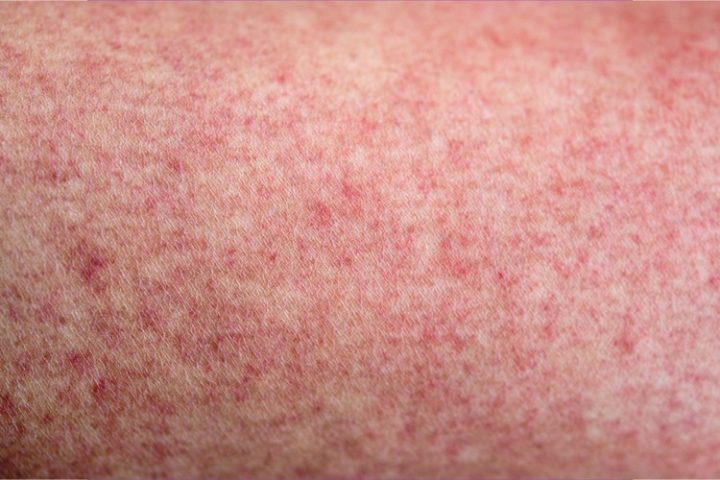
Scarlet fever, also known as Scarlatina, is caused by a bacterium, Group A streptococcus bacteria, Streptococcus Pyogenes, which is the most common source of “strep throat.” Scarlet fever symptoms usually include a red rash, a “strawberry tongue, sore throat, fever, and swollen glands. The disease spreads via respiratory droplets mostly produced during coughing and sneezing.
While not one of the most lethal of diseases afflicting the world, scarlet fever holds a sinister place in the pantheon of plagues for its preference of striking down children. Though possibly mentioned as far back as Hippocrates in 400 B.C., scarlet fever came into its own in America during the 1800s and early 1900s. It was quite common during that time, killing almost five percent of those contracting it, and 36,000 died in England and Wales alone during the first decade of the 20th century. Its complications often affected the kidneys and joints, or lead to rheumatic fever, which often causes heart damage. People who read Louisa May Alcott’s children’s novel Little Women may recall the tragic death of Beth March, who succumbed to scarlet fever — a fate she shared with Alcott’s real-life sister, Elizabeth. The discovery of penicillin almost eradicated the disease in the 20th century.
Starting with a few cases in Singapore in 2006, the disease moved throughout Vietnam, South Korea, Hong Kong, and China. Authorities became alarmed as it spread to England, Wales, and the United States.
Between 1999 and 2013, there were about three to eight cases of scarlet fever per 100,000 people in the United Kingdom. However, starting in 2014, case numbers climbed. There were 1,075 cases reported in one week, with 15,637 reported cases over the year, making a rate of infection 27 per 100,000 — three times the previous year’s. In 2015, the ratio reached 31 per 100,000. The year 2016 saw 19,206 cases, for 33 out of 100,000, the highest recorded number seen since 1967.
Earlier this month, two University of Queensland professors from the University of Queensland released a new report detailing this dreaded killer’s return. In it, they determined that “supercharged ‘clones’ of the bacteria Streptococcus pyogenes are to blame for the resurgence of the disease, which has caused high death rates for centuries.”
Team lead UQ Professor Dr. Stephan Brouwer said: “This global re-emergence of scarlet fever has caused a more than five-fold increase in disease rate and more than 600,000 cases around the world.”
According to co-author Professor Mark Walker: “The toxins would have been transferred into the bacterium when it became infected by viruses that carried the toxin genes.”
Walked continued: “We’ve shown that these acquired toxins allow Streptococcus pyogenes to better colonize its host, which likely allows it to out-compete other strains. These supercharged bacterial clones have been causing our modern scarlet fever outbreaks. The research team then removed the toxin genes from the clones causing scarlet fever, and these modified ‘knock-out’ clones were found to be less able to colonize in an animal model of infection.”
Walker also stated that this new strain of scarlet fever has remained in check so far because of the public health policy measures introduced to control COVID-19:
This year COVID-19 social distancing has kept scarlet fever outbreaks in check for now, and the disease’s main target — children — have been at school less and also spending far less time in other large groups. But when social distancing eventually is relaxed, scarlet fever is likely to come back. We need to continue this research to improve diagnosis and to manage these epidemics better. Just like COVID-19, ultimately, a vaccine will be critical for eradicating scarlet fever — one of history’s most pervasive and deadly childhood diseases.
Several points of the article should concern us. First, modern medicine’s illusion of conquering diseases and viruses is falling apart as the old plagues often return, in treatment-resistant forms. While modern medicine has dramatically reduced old-time epidemics, many were already in decline before the rise of vaccines and the Pharma-State because of increased sanitation and personal hygiene.
By focusing on a “vaccine,” and the lock-down conditions many are experiencing today, the doctors are pushing the Pharma-State goals of profits and control, and they fail to consider other factors such as proper nutrition and staying fit.



